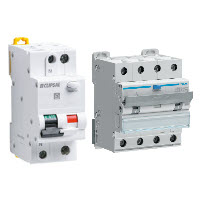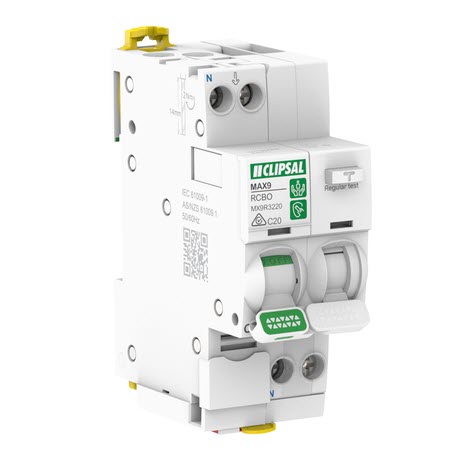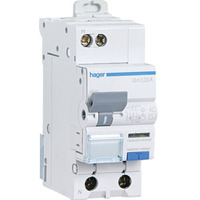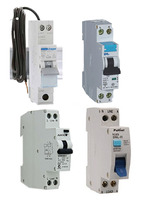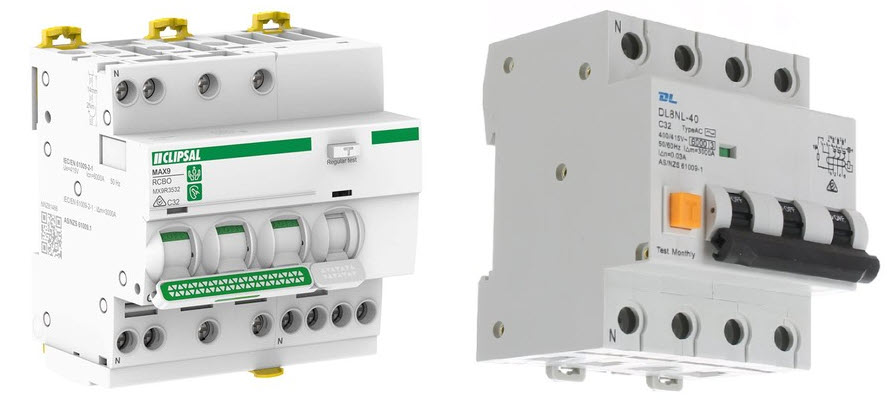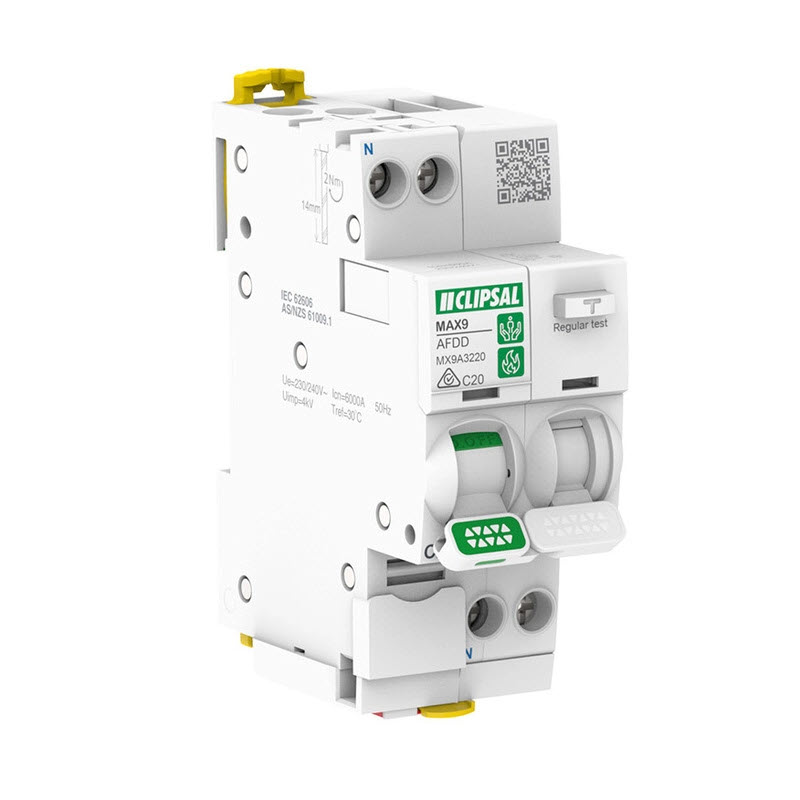What are RCBOs?
RCBOs, short for Residual Current Circuit Breakers with Overcurrent Protection, are crucial electrical devices designed to ensure the safety and protection of electrical circuits. They offer rapid disconnection of electricity in case of potential hazards like earth fault currents, overloads, and short circuits. By preventing prolonged and potentially severe shocks, RCBOs play a vital role in safeguarding people and equipment.
Understanding RCBOs
Residual current device (RCD) and Residual current circuit breaker (RCCB)
Residual Current Devices (RCDs) and Residual Current Circuit Breakers (RCCBs) are integral components of RCBOs. RCDs protect against earth fault currents, detecting any imbalance between the live and neutral currents and disconnecting the circuit swiftly. RCCBs, on the other hand, combine residual current protection with overcurrent capabilities, ensuring defence against both earth leakage and overloads.
The Importance of Overcurrent Protection
Overcurrent protection is a critical function of RCBOs. It guards against electrical dangers caused by excessive current flow, such as overloads and short circuit currents. An overload occurs when the power demand surpasses the capacity of the circuit, while a short circuit results from insufficient resistance and leads to a high-level multiplication of amperage. RCBOs detect and interrupt such conditions, preventing potential risks to people, equipment, and property.
Functions of RCBOs
Protection against Earth Fault Currents
One of the primary functions of RCBOs is to provide robust protection against earth fault currents. These currents occur when there is an accidental break in the circuit, which can result from wiring errors or DIY accidents. RCBOs swiftly detect any leakage currents flowing through the earth connection and disconnect the circuit, minimising the risk of electric shock.
Protection against Overload and Short Circuit Currents
RCBOs are designed to safeguard against overloads and short-circuit currents. An overload happens when the circuit is burdened with excessive electrical current, causing it to exceed the cable's capacity. Short circuits occur due to inadequate circuit resistance and can lead to the wires melting and potential fire hazards. RCBOs promptly detect these conditions and interrupt the circuit, mitigating risks and ensuring the safe operation of the electrical system.
Installation and Testing of RCBOs
Design and Testing Requirements for RCBOs
The design and testing requirements for RCBOs are outlined in the standards IEC/EN 61009. These standards specify the criteria for residual current circuit-breakers with integral overload protection for residential or commercial premises and similar uses. Manufacturers adhere to these requirements to ensure that RCBOs meet the necessary safety and performance standards.
Installation Guidelines for RCBOs
Proper installation of RCBOs is crucial to ensure their effective operation. A qualified electrician should perform the installation following the manufacturer's instructions and guidelines set out in the BS7671 standard. The process involves isolating the electrical supply, attaching the device to the din rail and busbar, and ensuring secure cable connections. Checking the resistance levels, testing insulation, and verifying compliance with specifications are essential to guarantee the correct installation of RCBOs.
RCBOs vs. Other Devices
RCDs vs. RCBOs: A Comparison
While RCDs and RCBOs protect against electrical hazards, there are notable differences between the two. RCDs focus solely on detecting and disconnecting circuits in the presence of earth leakage currents. In contrast, RCBOs offer the additional benefit of overcurrent protection, safeguarding against earth leakage and overloads or short circuits. Including overcurrent capabilities makes RCBOs more versatile and comprehensive regarding electrical protection.
RCBOs vs. RCCBs: Key Differences
RCBOs and RCCBs serve similar functions but with distinct features. RCBOs provide both residual current protection and overcurrent protection in a single device, offering combined defence against various electrical risks. On the other hand, RCCBs focus exclusively on earth leakage protection and require the installation of an external circuit breaker to ensure overcurrent and short circuit protection. The choice between RCBOs and RCCBs depends on the specific needs and requirements of the electrical system.
RCBO vs. MCB: Understanding the Variations
RCBOs and MCBs (Miniature Circuit Breakers) serve different purposes in electrical systems. While both offer circuit protection, MCBs specifically address over-current issues, automatically stopping the flow of electricity upon detecting a fault. However, MCBs do not protect against earth leakage. RCBOs, on the other hand, combine the functionalities of residual current protection and overcurrent protection, making them a more comprehensive choice for ensuring safety against multiple electrical risks.
Speciality RCBO's
3 Phase RCBO
A three-phase RCBO is a specialised type of safety device used in three-phase electrical systems, standard in commercial and industrial settings. These devices maintain the safety advantages of a standard RCBO, offering protection against electrical shocks due to current leakage and overcurrent situations that could lead to electrical fires. In addition, three-phase RCBOs are designed to handle the complexities of three-phase power systems, making them essential for protecting equipment and personnel in environments where such systems are in use.
Arc Fault Detection AFDD RCBO
Clipsal's Arc Fault Detection Devices (AFDDs) are advanced safety mechanisms designed to detect and mitigate dangerous electrical arcs. These arcs can occur due to various factors, such as damaged insulation or loose connections, and can potentially cause severe electrical fires. The AFDDs by Clipsal add an extra layer of protection by continuously monitoring the circuit for these arcs. Upon detection, the AFDD disconnects the circuit immediately, preventing potential fire hazards and providing comprehensive electrical safety in residential and commercial installations.
Benefits of RCBOs
Enhanced Safety against Electrical Shocks
RCBOs provide enhanced safety by rapidly disconnecting electricity in the event of an earth fault or imbalance in the current. By doing so, they minimise the risk of electric shocks, which can have severe and potentially life-threatening consequences. Integrating residual current protection and overcurrent capabilities in RCBOs ensures comprehensive defence against multiple electrical hazards, offering peace of mind to users. NHP, Hager RCBOs, and Clipsal RCBOs are renowned for their high-quality RCBOs, used extensively in worldwide residential, commercial and industrial power distribution systems.
Protection against Overloads and Short Circuits
RCBOs offer reliable protection against overloads and short circuits, which can cause damage to electrical devices and pose fire hazards. By promptly detecting and interrupting these conditions, RCBOs prevent excessive current flow and potential wire melting. This proactive approach helps safeguard valuable equipment, minimise the risk of electrical fires, and ensure the smooth functioning of the electrical system.
Wiring and Installation of RCBOs
How to Wire RCBOs
Proper wiring is crucial for the effective operation of RCBOs. Follow the manufactures instruction. Always ensure that a qualified electrician carries out this process, as incorrect wiring can lead to electrical hazards.
Steps to resetting an RCBO Switches
Resetting an RCBO can be performed through a relatively straightforward process. However, it's important to remember that safety is paramount when dealing with electrical devices. If you are unsure about anything, contact a qualified electrician. Here are the steps to reset RCBO's:
-
Identify the tripped RCBO: The tripped RCBO lever will typically be in the middle position, different from the 'ON' or 'OFF' positions. It might also have a visible indicator (such as a red strip) showing it has tripped.
-
Turn off the appliance, and you must unplug it: If you know which appliance caused the RCBO to trip, turn it off, even if it is a difficult-to-reach power point, especially the fridge or freezer. Water appliances seem to cause the most faults.
-
Switch the RCBO to the 'OFF' position: Before resetting, it's essential to switch the RCBO to the 'OFF' position. This step is crucial to ensure a successful reset.
-
Reset the RCBO: After turning it off, you can reset the RCBO by flipping the switch back to the 'ON' position.
-
Check for the operation of the RCBO: The RCBO should now stay in the 'ON' position. If it trips again immediately, there may be a persistent fault with your wiring or an appliance. If this is the case, call an electrician to investigate further.
Making the Right Choice: RCBOs for Electrical Protection
RCBOs play a vital role in ensuring the safe operation of electrical circuits by protecting against earth fault currents, overloads, and short circuits. With their integrated functionality of residual current protection and overcurrent capabilities, RCBOs offer a comprehensive defence against multiple electrical risks. Individuals and businesses can enhance safety by choosing RCBOs for electrical protection, minimising the risk of electric shocks and fires, and protecting valuable equipment and property.

